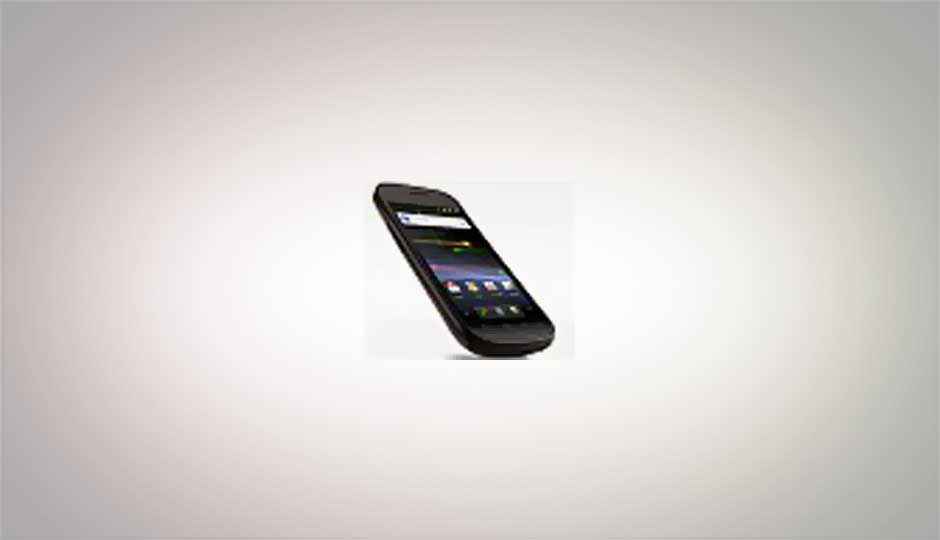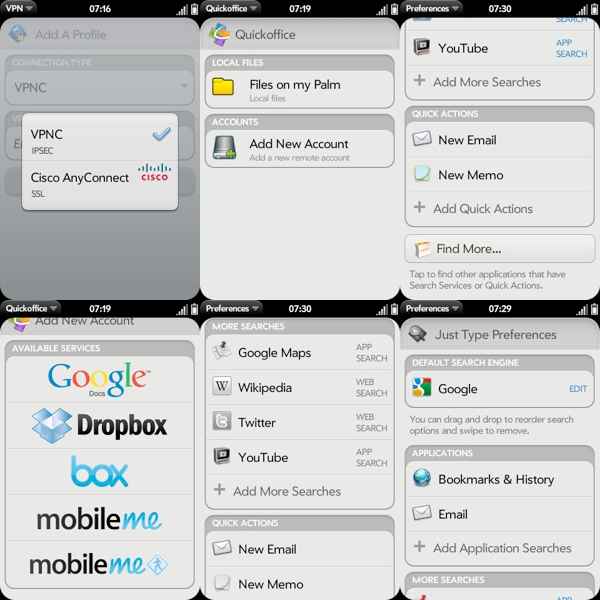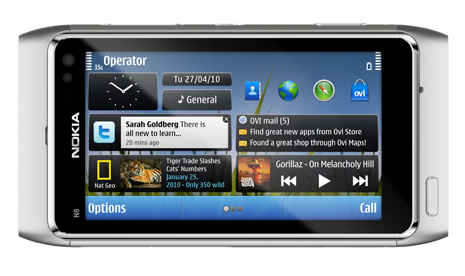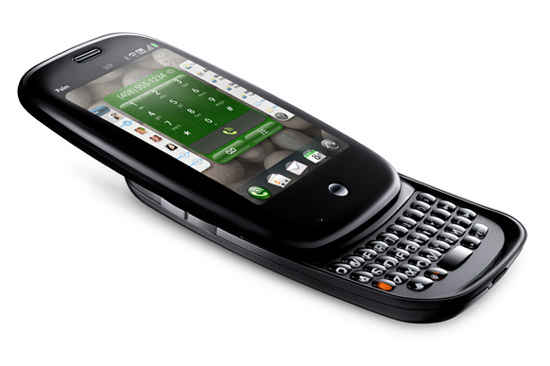Mobile Watch: round-up of 2010, expectations of 2011

While 2010 has been called by some as the year of the tablet, the mobile world saw much change, learning some beneficial lessons with the levelling of the playing field. We saw the launch of new mobile operating systems, countless phones, new chipsets, new display technologies, tablets, tablet-phones, phone-cameras, and a lot more…Let’s hold hands and take a walk down 2010’s mobile hall of fame.
 Survey
SurveyNEW OPERATING SYSTEMS
2010 could have just as easily been called the year of the mobile operating system, with eight new major operating systems being released, including Apple’s much updated iOS 4, Google’s polished Android Froyo and power-efficient Gingerbread, RIM’s touch-friendly BlackBerry OS 6, Symbian Foundation’s much maligned Symbian^3, Intel and Nokia’s MeeGo, HP-Palm’s refreshed webOS2.0, and Microsoft’s mixed review champion – Windows Phone 7.
[RELATED_ARTICLE]All of these brought something new to the table, and all of them learnt something from each other. A thing that they all share in common is a conscious movement towards simplicity, with seamless form looking to follow powerful function. Each offered users many of the features they’d been asking for, and each received varied amounts of praise and criticism. No matter how well they fare against each other now, the future of all these platforms looks promising, with major updates already promised to arrive by next year, and all the bustling competition making the end user the real winner.
While Apple’s iOS devices, and in the smartphone equation, the iPhone, have been doing especially well this year – with over 14 million iPhones sold in a single quarter*2 – Android saw the most remarkable growth this year, despite what some call fragmentation in the form of four separate operating systems on sale in the market. Starting with a U.S. smarpthone market share of 14% in January*1, compared to Apple’s 32% and RIM’s 34%, Android assimilated a dominating 32% share of the market by August 2010, leaving RIM and Apple each a quarter. The introduction of Froyo (Android 2.2), widescale manufacturer adoption, and the burgeoning Android Market in no small way powered the rise.
ingerbread, or Android 2.3, is already being shown off, and the improved performance and interface it promises will soon be mass-adopted by manufacturers and hit markets in a big way by early 2011. It has just been released with the lead device of the platform, the Samsung made Google Nexus S. Get more details of Gingerbread here. Android, just like iOS, will soon also get a tablet-oriented variant, called Honeycomb (or Android 3.0)
*1 Source: AC Nielsen August 2010 U.S. Smartphone Market Share
MOBILE MARKET SHARE
Global market shares by the third quarter of the year revealed some interesting trends, with the world’s largest manufacturer, Nokia, remaining at the top but losing share*2, while LG, Sony Ericsson and RIM suffered major losses alongside it. Apple saw some astounding growth, with the fruity giant reaching to the top four spot, passing RIM and managing to knock Sony Ericsson off the list Top 5 list for the first time since 2004. Samsung remained rock steady holding a fifth of the market. HTC and Motorola, though not on the list for now, are also quickly gaining market share, could come to rival Apple and RIM soon enough in 2011.
Looking specifically at India, domestic brands are starting to make a major impact, taking share away from top manufacturers Nokia and Samsung. The Indian market is currently one of the most diverse in the world, and 35 different brands are listed by the IDC. According to the report, Nokia’s share has fallen from 54% at the end of June last year to 36.3% at the end of June this year, while the top four domestic brands (Micromax, Spice, Karbonn and Lava) together now occupy nearly 33% of the market. While Nokia does dispute the numbers, and all statistics have to be taken with a pinch of salt, it is obvious that numerous Indian (as well as quite a few Chinese) brands are very active in the low-end markets in both the rural and urban sectors. The Top 5 according to IDC were Nokia, Samsung, G’Five, LG, and Micromax.
Top Five Mobile Phone Vendors, Shipments, and Market Share, Q3 2010 (Units in Millions)
|
Vendor
|
3Q10 Unit Shipments
|
3Q10 Market Share
|
3Q09 Unit Shipments
|
3Q09 Market Share
|
3Q10/3Q09 Change
|
|
1. Nokia
|
110.4
|
32.4%
|
108.5
|
36.5%
|
1.8%
|
|
2. Samsung
|
71.4
|
21.0%
|
60.2
|
20.3%
|
18.6%
|
|
3. LG Electronics
|
28.4
|
8.3%
|
31.6
|
10.6%
|
-10.1%
|
|
4. Apple
|
14.1
|
4.1%
|
7.4
|
2.5%
|
90.5%
|
|
5. R.I.M.
|
12.4
|
3.6%
|
8.5
|
2.9%
|
45.9%
|
|
Others
|
103.8
|
30.5%
|
80.9
|
27.2%
|
28.3%
|
|
Total
|
340.5
|
100.0%
|
297.1
|
100.0%
|
14.6%
|
*2Source: IDC Worldwide Quarterly Mobile Phone Tracker, October 28, 2010
Read on to see 2010 as the Year of the Tablets, some of the most distinctive new phones of the year, and more…
MOBILES/TABLETS
2010 wasn’t called the year of the tablets for no reason, and though several tradeshows throughout the year saw countless devices from numerous manufacturers being displayed, for the most part of the year, the Apple iPad was first major and only device to hit the market when intlaunched in April, taking it by storm – selling 3 million units in less than three months, and 4.2 million units in the next two months…The device in fact sold so well, that Steve Jobs announced in October that Apple had sold more iPads than Mac computers in that fiscal quarter.
Other tablets were slow to arrive on the scene officially, with the Samsung Galaxy Tab only just hitting markets, and the lukewarmly received Dell Streak launched in June. So far, no other major manufacturer has released their tablet devices, with the exception of the Toshiba Folio 100, which also got poor reviews. The CrunchPad, which later became the JooJoo from Fusion Garage, was an early hope, but one that never took off either, plagued by usability issues. The Indian favourite, Notion Ink’s Adam, finally went up for pre-order earlier this month, and is expected to start shipping sometime in Q1 2011. it still looks promising.
[RELATED_ARTICLE]HP did a lot of vacillating between which OS it would use for its tablets, and ended sticking by webOS 2.0 for its consumer-oriented tablets, and Windows 7 for its enterprise oriented devices. It’s just released the high-performance HP Slate 500 for enterprise customers, and looks to have a promising future.
For all the praise that was lauded to it, the Apple iPad has yet to hit Indian markets, which so far have only received the Dell Streak and Samsung Galaxy Tab from major international manufacturers. Olive Telecom’s recently released OlivePad VT100 definitely deserves a mention – a Android 2.2 based 7-inch tablet with full GSM phone functionality as well as 3G and WiFi connectivity, and is priced around Rs. 24,000. ViewSonic owns rights to the design in some markets, including the US and Europe, and is launching it as the ViewSonic ViewPad 7. ViewSonic plans to release three more tablets this year.
Other manufacturers, such as MSI, RIM, Acer, LG, and Asus, all have tablet devices coming up by the end of the year and early next year. 2011 will definitely start seeing some serious competition across the handheld segment, with the market being saturated by devices. By then, users will be able to choose between Android, iOS, QNX, Windows 7, webOS, Windows CE, and other tablets.
NEW PHONES
There were plenty of new phones from the low-end to the high-end launched this year, from Nokia’s claim to the smartphone crown with the photo-happy Symbian^3-based Nokia N8, to the fast-spawning Android-based Samsung Galaxy S and its wide family. Other notable mobiles include the Apple iPhone 4, HTC Desire, BlackBerry Torch, Sony Ericsson Xperia X10, and Motorola Milestone XT720.
Dell made its mark in the mobile handset world this year, starting with the Streak. It also previewed numerous other models, based on Android and Windows Phone 7, most of which will be releasing early next year. Dell also tried it hands at selling rebranded ZTE phones in India, getting on the low-cost Android handset bandwagon.
HP acquired Palm earlier this year, and while the industry was eager to know just what HP intended do with Palm’s acclaimed proprietary mobile technology, HP kept mum for most of the year, until it previewed the Palm Pre 2, the successor to the successful Palm Pre, featuring a new and improved webOS 2.0.
Other notable mobiles introduced include the Sony Ericsson S006, which will offer a 16.4MP camera to users, as well as the LG L-03C phone-camera, which is a device with the form factor and camera mechanism of a compact digital camera, and the functionality of a mobile phone.
Windows Phone 7 launched in a big way this October, with ten phones from four manufacturers (HTC, Samsung, LG, Dell), being launched. Most of them have received good reviews, while the operating system seems to have made quite an impression with critics and masses alike. Of course, only time and continual improvement will tell if WP7 will survive in the competition-ridden smartphone world.
Google also released the Samsung made Google Nexus S this year, which is the first device with the Google Android 2.3 Gingerbread operating system. The Nexus S will also be one of the first commercial devices to support Near Field Communication (NFC), allowing the device to interact with its electronic environment in ways that Google likens to “magic”. Some of the expected applications will be various augmented reality functions, as well as personal identification, mobile “electronic wallet” payment systems, etc.
HARDWARE
A lot of new hardware was introduced this year, from SuperAMOLED, SuperLCD, and Retina Display screens, to hardened Gorilla Glass, better cameras, and more capable mobile processors. Smartphones and tablets are the trendsetters of the industry, and almost all new technologies are introduced into the market on one of these devices.
Processors are becoming smarter and faster, and if anything, they require power-consumption to be optimized in the face of all that performance. Efficiency is certainly the new holy grail of mobile processors, for even if a processor is powerful enough to play 1080p HD video, there is no point if the battery runs out in 20 minutes. Each new generation of processors (both mobile and desktop) brings unprecedented efficiency levels to the playing field, and their comparative consumption can prove to be the main deciding factor for manufacturers to choose one over the other.
While 600MHz has become the absolute minimum clockspeed for a smarpthone or tablet processor, 1GHz processors first introduced in 2010 are found in numerous devices. Right now, leading processor and chipset manufacturers are all concentrating on providing the best performance per watt, whether they use System-on-Chip designs or more conventional chipsets, dual-core or single-core. Current hopefuls are the ARM-designed dual-core Cortex A9 derivatives, such as the 1GHz Samsung Orion. Qualcomm has also announced its dual-core Snapdragon processors, due in early 2011, running at 1.2GHz and 1.5GHz. The Nvidia Tegra 2 is also finally seeing some wide-scale adoption, being chosen by LG to power its Optimus lineup of smartphones.
Read on to see everyone in the mobile world suiing everyone else, RIM’s worrying future, and our hopes for 2011…
EVERYONE SUIING EVERYONE
Smartphone competition is definitely cutthroat, and 2010 saw a whole bunch of patent infringement lawsuits between major mobile manufacturers, with nearly everyone in the industry suing everyone else, from Microsoft suing Motorola and vice versa, to Nokia suing Toshiba, Sharp, Hitachi, LG, Apple, Qualcomm, and Motorola. Apple also got into the game, and sued HTC and Nokia.
RIM UNDER PRESSURE
It’s been a very tough year for RIM, losing market share to Apple, Nokia, and Android devices. RIM’s latest flagship phone, the BlackBerry Torch, which features its latest OS (BlackBerry 6), has not done well in global markets, receiving some very lukewarm reviews (read ours). However, things might be looking up in the form of the full-featured RIM PlayBook, when it releases later this year.
RIM also had a tough time dealing with various governments this year, with a whole bunch of them including the UAE and India exerting pressure on it to allow them to circumvent its own security features in the name of their national security. While this could be seen as an advertisement for the efficacy of RIM’s secure BlackBerry services, it possibly also contributed to a global market share decline, as well as falling stock prices. RIM certainly has some very hard decisions to take for its future, if it intends to remain one of the top mobile manufacturers and enterprise service providers in the world.
WHAT 2011 WILL BRING
2011 promises to be even more exciting than 2010, with all those new operating systems vigorously competing on the very level playing field of the global mobile market. Windows Phone 7 in particular promises to evolve further and continually better itself, providing better security features, Xbox Live functionality, a better offering in the mobile app market, numerous new handsets, and finally, even copy & paste functionality.
What else is expected in 2011? A whole bunch of tablets from a variety of manufacturers, big and small…Google will also be releasing what it calls a tablet friendly version of Android, Honeycomb, which will certainly galvanise the market further. The next generation iPad is also expected, featuring a higher resolution display, front facing camera, and a new and improved tablet-specific version of iOS4.
In the Indian context, we will soon see a world of change, with the advent of 3G by early next year. All of a sudden, phones that can actually utilize the new data connections efficiently, allowing for a good browsing interface, wide access to mobile apps and value added services, as well as integrated social networking and media consumption services, will definitely have an advantage. The Indian masses will also be offered data plans and contracts that might just portend a new age in the Indian mobility market, with carrier-locked phones possibly making it big – bundled with data plans.
In terms of mobile hardware technology, we’ll also see the first handsets arriving with dual core and other newer mobile processor architectures, hailing a new performance high in the mobile world, whether in the tablet, netbook, or mobile phone form factors.
Expect mobile displays to improve as well, offering lowering power consumption and higher contrast and resolutions. On the software front, augmented reality will continue to grow, and as we all become more connected with 3G and 4G services, you can expect a whole world set alongside reality, providing you with information as and when you need it. Numerous developers are getting their hands dirty in this field, with the most notable being Google, with its Google Street View technology and connected search features.
All in all, 2011 sure looks like it will be an exciting time to be alive, if technology on the go is your thing…


